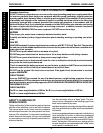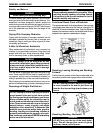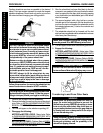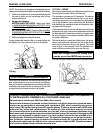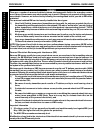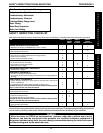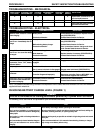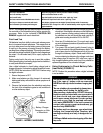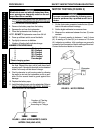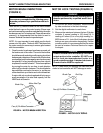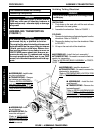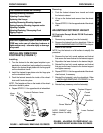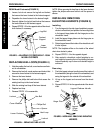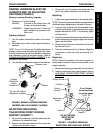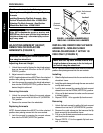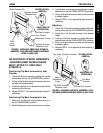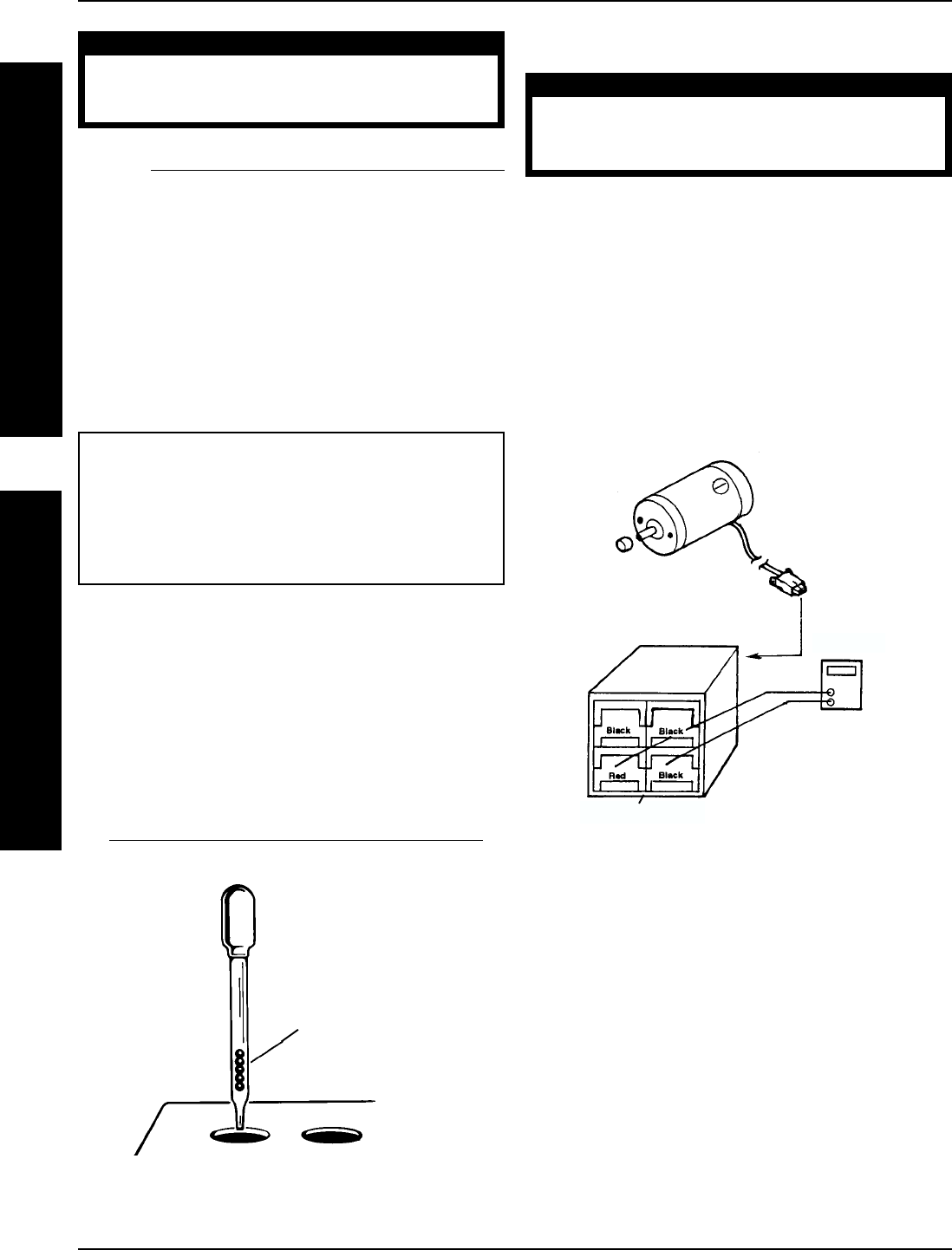
14
WARNING
Most batteries are not sold with instructions. How-
ever, warnings are frequently noted on the cell
caps. Read them carefully.
1. Remove the battery boxes from the wheelchair. Re-
fer to
INSTALLING/REMOVING BATTERY BOXES
in PROCEDURE 8 of this manual.
2. Remove the battery caps from the battery.
3. Squeeze the air from the hydrometer.
4. Place the hydrometer into a battery cell.
NOTE: DO NOT fill hydrometer more than 3/4 full.
5. Draw up sufficient acid to cover float balls.
6. Tap lightly to remove air bubbles.
7. Number of floating balls indicates charge.
NUMBER OF FLOATING BALLS
0 Discharged
1 25% Charged
2 50% Charged
3 75% Charged
4 100% Charged
* 5 Overcharged
* Check charging system.
8. Flush the liquid back into the same cell after reading
the float. Repeat this step until all cells have been
properly read. A shorted or dead cell can be detected
when it is the only cell that doesn’t charge.
9. Flush hydrometer in cold running water by allowing
the water to rise into the hydrometer as far as pos-
sible. Do this several times to guard against burn
damage.
10. Replace the battery caps.
11. Install the battery boxes onto the wheelchair. Refer to
INSTALLING/REMOVING BATTERY BOXES in
PROCEDURE 8 of this manual.
FIGURE 2 - USING HYDROMETER TO CHECK
BATTERY CELLS (LEAD ACID)
Number of Floating
Balls Will Vary
According to Charge
FIGURE 3 - MOTOR TESTING
MOTOR TESTING (FIGURE 3)
WARNING
Invacare recommends that the following proce-
dures be performed by a qualified service tech-
nician.
1. On the 4-pin motor connector, locate the two (2) con-
tacts in the red and black housings.
2. Set the digital multimeter to measure ohms.
3. Measure the resistance between the two (2) motor
contacts.
NOTE: A normal reading is between 1 and 5 ohms
(
Ω
). A reading of 0 ohms (
Ω
) or in excess of 15 ohms
(
Ω
) indicates a problem. High readings are generally
caused by bad connections and/or damaged brushes.
Contact authorized dealer or Invacare.
Ohmmeter
Motor Connector
T
R
O
U
B
L
E
S
H
O
O
T
I
N
G
SAFETY INSPECTION/TROUBLESHOOTINGPROCEDURE 2
S
A
F
E
T
Y
I
N
S
P
E
C
T
I
O
N



